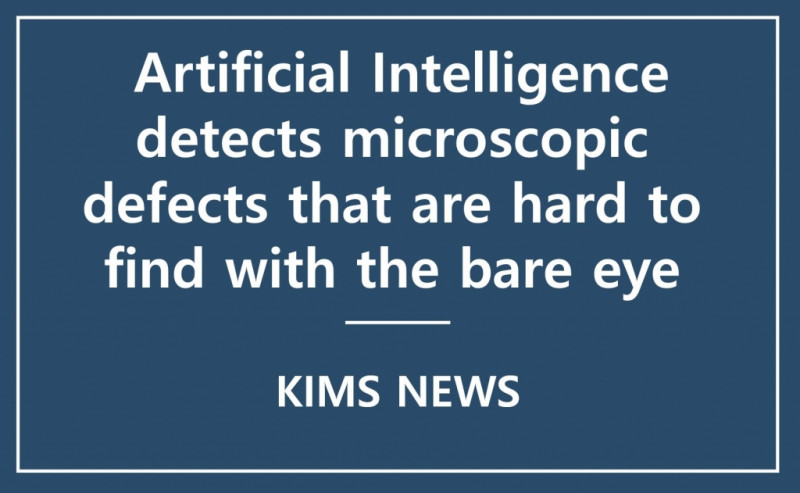R&D | Artificial Intelligence detects microscopic defects that are hard to find with the bare eye
Page info
Date21-07-24 12:17 Hit628Link
Contents
KIMS developed automatic recognition technology to detect microscopic surface defects in products |
The research team led by Dr. Seong-hoon Kang in the Department of Materials AI & Big-Data at Korea Institute of Materials
Science utilized artificial intelligence to develop a technology to accurately detect microscopic
defects on the surface of an object which may not be detected with a bare eye.
Visual inspection requires a lot of time and cost since microscopic defects appear in various forms. In particular, as the surface
of a part with a complex hierarchical structure is three-dimensional, it was difficult to accurately inspect with a microscope or
naked eye.
To solve the issue, the researchers developed an artificial intelligence (AI) technology that automatically transfers the three
dimensional shape into a two-dimensional image of a hierarchical structure and detects microscopic defects that deviate from
the standard image.
The artificial neural network performs learning tasks to build the knowledge of the characteristics of defective factors and then
conducts defect detection and classification. Since microscopic defects, about half the thickness of a hair (50㎛), cannot be
accurately detected with the naked eye, the technicians have to take dozens of photos per specimen and inspect with a
microscope one by one. But the technology now allows accurately detecting a defect in only about 1 second.
Aside from defect detection, Class Activation Mapping (CAM) was introduced to increase the reliability of microscopic defect
detection as the user can find out what kind of surface characteristics was selected by the artificial intelligence (AI).
Dr. Seong-hoon Kang, the principal researcher, said, “The process automation and smart factory are emerging issues.” “If the
technology is applied to various automated processes, microscopic defects which are difficult to detect with the naked eye can
be detected swiftly.”
The research was funded by a project to establish a virtual engineering platform for lightweight materials for vehicles of the
Ministry of Trade, Industry and Energy as well as supported by the Fundamental Research Program of KIMS.

